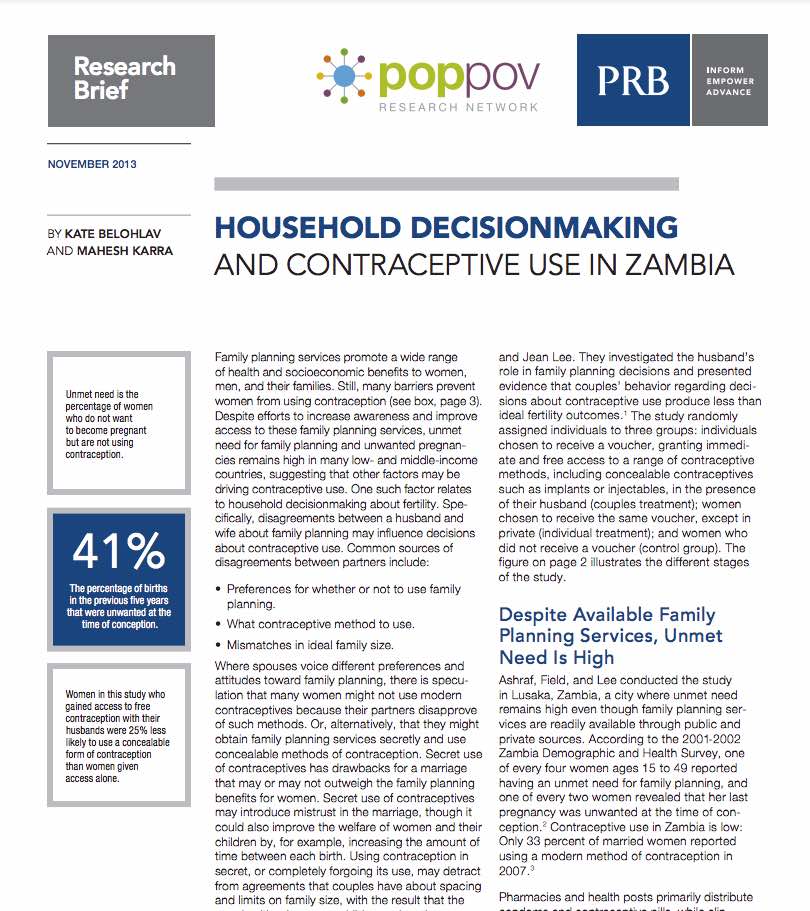
Household Decision making and Contraceptive Use in Zambia
Product: Research Brief
Author: PRB
Date: November 20, 2013
(November 2013) Family planning services promote a wide range of health and socioeconomic benefits to women, men, and their families. Still, many barriers prevent women from using contraception. Despite efforts to increase awareness and improve access to these family planning services, unmet need for family planning and unwanted pregnancies remains high in many low- and middle-income countries, suggesting that other factors may be driving contraceptive use. One such factor relates to household decisionmaking about fertility. Specifically, disagreements between a husband and wife about family planning may influence decisions about contraceptive use. Common sources of disagreements between partners include:
- Preferences for whether or not to use family
planning. - What contraceptive method to use.
- Mismatches in ideal family size.
Where spouses voice different preferences and attitudes toward family planning, there is speculation that many women might not use modern contraceptives because their partners disapprove
of such methods. Or, alternatively, that they might obtain family planning services secretly and use concealable methods of contraception. Secret use of contraceptives has drawbacks for a marriage that may or may not outweigh the family planning benefits for women. Secret use of contraceptives may introduce mistrust in the marriage, though it could also improve the welfare of women and their children by, for example, increasing the amount of time between each birth. Using contraception in secret, or completely forgoing its use, may detract from agreements that couples have about spacing and limits on family size, with the result that the couple either has more children or has them more frequently than either one wants.
This brief presents findings and policy implications from a study by Nava Ashraf, Erica Field,
and Jean Lee. They investigated the husband’s role in family planning decisions and presented
evidence that couples’ behavior regarding decisions about contraceptive use produce less than
ideal fertility outcomes. The study randomly assigned individuals to three groups: individuals
chosen to receive a voucher, granting immediate and free access to a range of contraceptive
methods, including concealable contraceptives such as implants or injectables, in the presence
of their husband (couples treatment); women chosen to receive the same voucher, except in
private (individual treatment); and women who did not receive a voucher (control group).

 ">
">